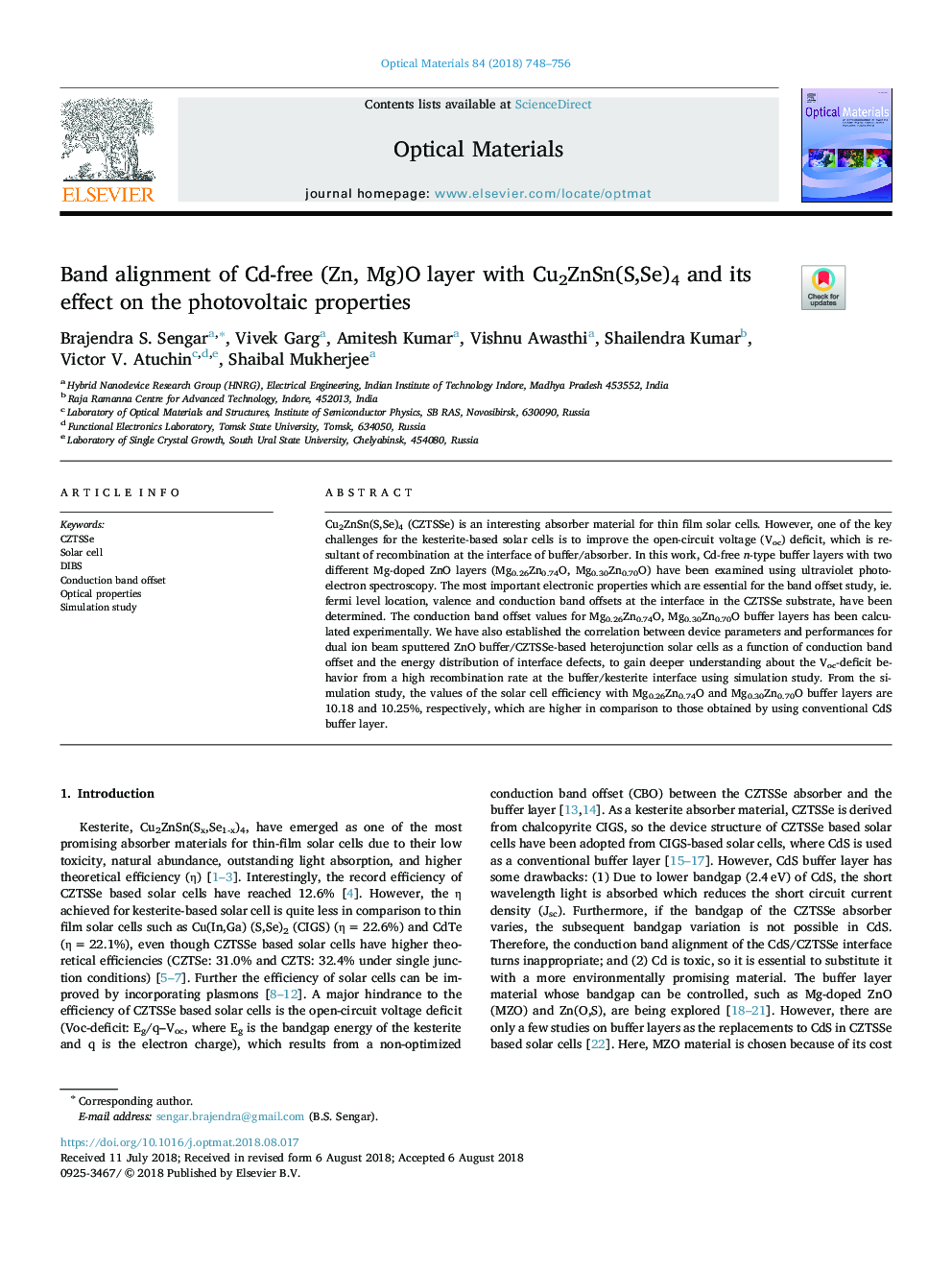| Article ID | Journal | Published Year | Pages | File Type |
|---|---|---|---|---|
| 11006838 | Optical Materials | 2018 | 9 Pages |
Abstract
Cu2ZnSn(S,Se)4 (CZTSSe) is an interesting absorber material for thin film solar cells. However, one of the key challenges for the kesterite-based solar cells is to improve the open-circuit voltage (Voc) deficit, which is resultant of recombination at the interface of buffer/absorber. In this work, Cd-free n-type buffer layers with two different Mg-doped ZnO layers (Mg0.26Zn0.74O, Mg0.30Zn0.70O) have been examined using ultraviolet photoelectron spectroscopy. The most important electronic properties which are essential for the band offset study, ie. fermi level location, valence and conduction band offsets at the interface in the CZTSSe substrate, have been determined. The conduction band offset values for Mg0.26Zn0.74O, Mg0.30Zn0.70O buffer layers has been calculated experimentally. We have also established the correlation between device parameters and performances for dual ion beam sputtered ZnO buffer/CZTSSe-based heterojunction solar cells as a function of conduction band offset and the energy distribution of interface defects, to gain deeper understanding about the Voc-deficit behavior from a high recombination rate at the buffer/kesterite interface using simulation study. From the simulation study, the values of the solar cell efficiency with Mg0.26Zn0.74O and Mg0.30Zn0.70O buffer layers are 10.18 and 10.25%, respectively, which are higher in comparison to those obtained by using conventional CdS buffer layer.
Related Topics
Physical Sciences and Engineering
Materials Science
Ceramics and Composites
Authors
Brajendra S. Sengar, Vivek Garg, Amitesh Kumar, Vishnu Awasthi, Shailendra Kumar, Victor V. Atuchin, Shaibal Mukherjee,
